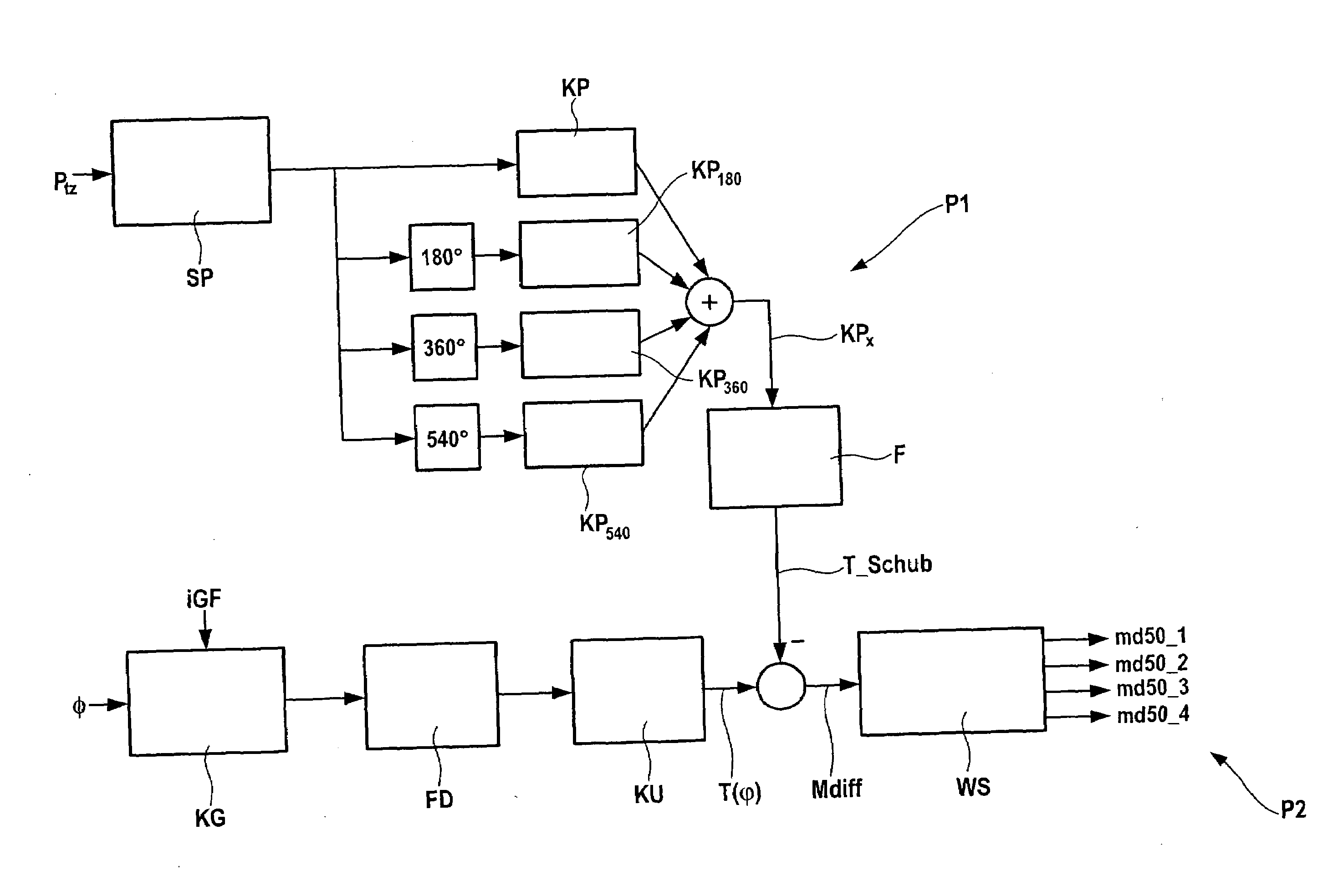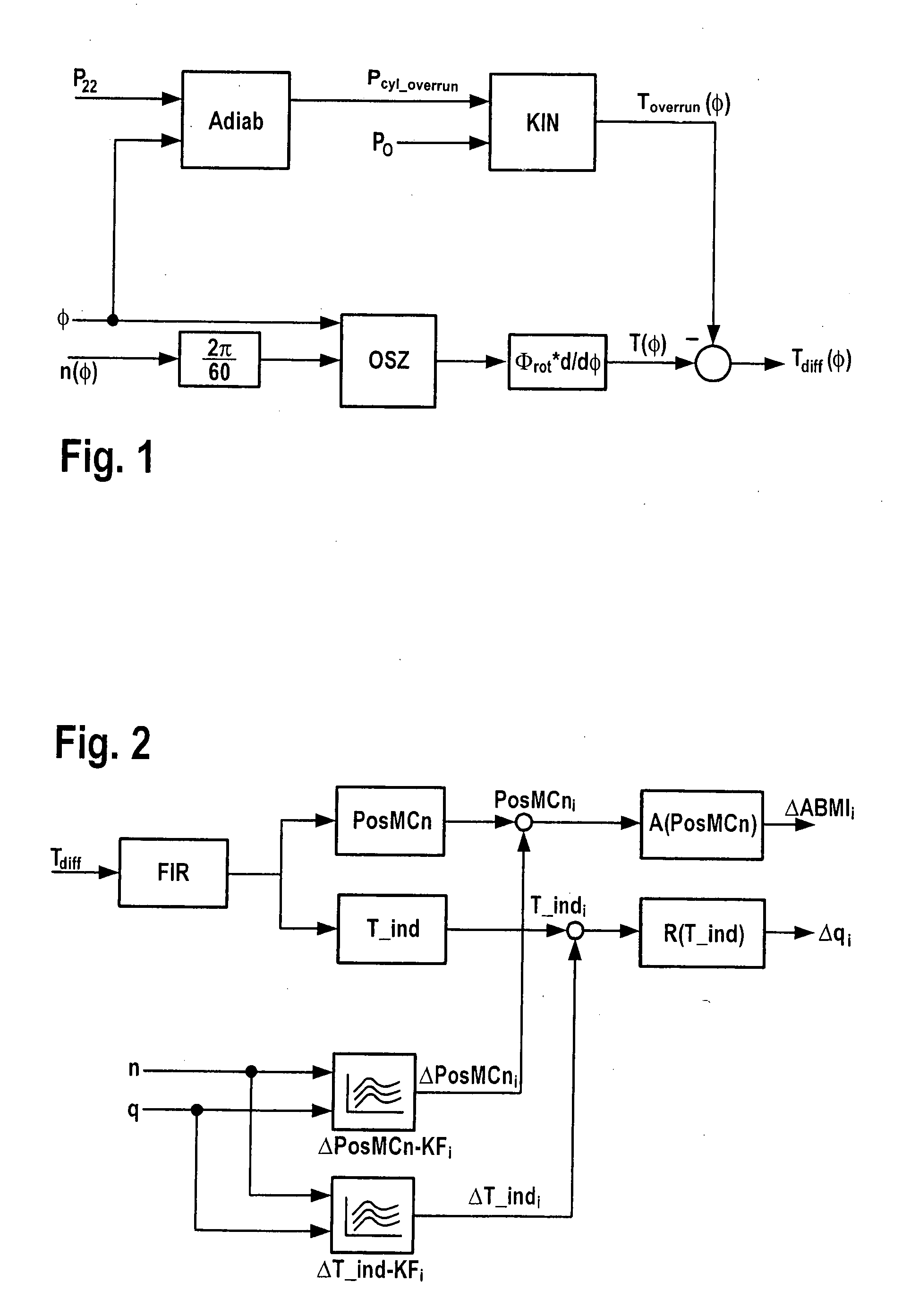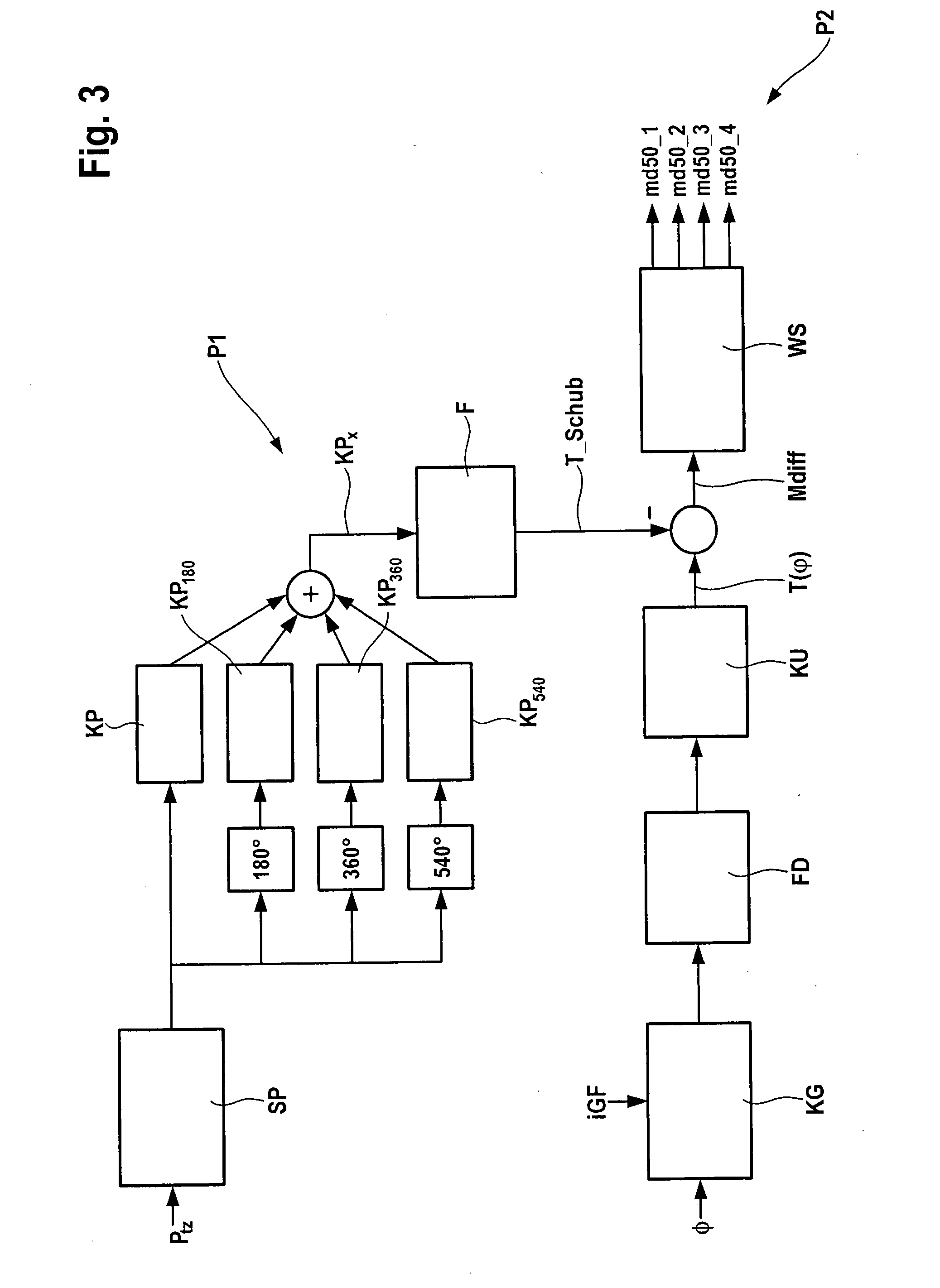Method for determining cylinder-specific combustion features of an internal combustion engine
a technology of internal combustion engine and combustion feature, which is applied in the direction of machines/engines, electric control, instruments, etc., can solve the problems of high additional cost of production use of cylinder-pressure sensors, very different combustion processes, and high cost of cylinder-pressure sensors, so as to achieve easy realization, more cost-effective effect, and effect on accuracy
- Summary
- Abstract
- Description
- Claims
- Application Information
AI Technical Summary
Benefits of technology
Problems solved by technology
Method used
Image
Examples
Embodiment Construction
[0025]In the following, the ascertainment, according to an example embodiment of the present invention, of combustion position PosMCn and of mean indicated torque T_ind is first of all explained with reference to the block diagram of FIG. 1. Subsequently, an alternative specific embodiment of the method according to the present invention is described, should one of the cylinders having a cylinder pressure sensor be indicated. Finally, exemplary embodiments are described for the control or adaptation on the basis of the ascertained variables.
[0026]FIG. 1 describes the part of the method up to the determination of a differential gas-torque curve T_Diff(φ) corresponding to the combustion. In a module OSZ, angular speed φ is subjected to a non-linear transformation which compensates for the influence of the oscillating masses of the internal combustion engine. After differentiation of corrected angular speed φ and multiplication by total moment of rotational inertia Θrot of the cranksha...
PUM
 Login to View More
Login to View More Abstract
Description
Claims
Application Information
 Login to View More
Login to View More - R&D
- Intellectual Property
- Life Sciences
- Materials
- Tech Scout
- Unparalleled Data Quality
- Higher Quality Content
- 60% Fewer Hallucinations
Browse by: Latest US Patents, China's latest patents, Technical Efficacy Thesaurus, Application Domain, Technology Topic, Popular Technical Reports.
© 2025 PatSnap. All rights reserved.Legal|Privacy policy|Modern Slavery Act Transparency Statement|Sitemap|About US| Contact US: help@patsnap.com



